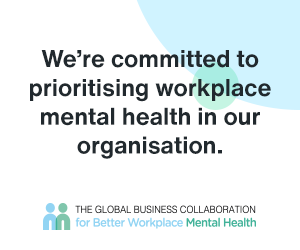Most companies remain unclear about the different dimensions involved in identifying high potential talent. Yet there is an increased awareness of employee talent, and high potential assessments and programmes are starting to become a norm.
Upon analysis of the Harvard Business Review numbers (2017), it is clear that companies must focus on their high potential employees for a number of reasons. Employees considered to be top talent outperform average employees consistently based on the complexity of the role. The review brought to light that the top employees are known to deliver a 50-200% higher contribution than the rest of their colleagues.
These high potential employees are often considered as ‘force multipliers’, raising the bar for their colleagues and direct reports.
Clearly, such numbers imply that investing in the right people through high potential assessments and programmes can directly translate into business returns for companies worldwide.
Identifying The Dimensions of High Potential
The question are simple: what is high potential? How does it differ from high performance? How do you measure it?
At The Talent Enterprise, we define high potential talent as those who have the future capacity to exponentially contribute to the success of their organisation. They demonstrate the right behaviour and learning agility along with an aspiration and longer-term commitment to maximising their potential.
Human behaviour is complex, and more so if we’re trying to predict how someone will perform and deliver value 3 or 5 years from today. Any high potential assessments and programmes must be specifically designed to pinpoint individuals who can bring positive changes to an enterprise. Hence, we highly recommend using a multi-modal approach, to carefully and objectively assess the key markers or attributes of high potential talent.
In the past few years, we’ve done researched with 10,000 managers and leaders representing a cross-section of industries, professions and geographies. This work has allowed us to identify 4 universal dimensions present in high potential talent. They are:
Cognitive Ability
Employees who do not demonstrate high levels of cognitive ability and learning agility have fewer chances of succeeding in demanding roles in the future.
High potential talent must have the cognitive ability to take on more complex tasks, deliver value and contribute to the future growth of their organisations. Keeping in mind the rapid advancements and changes impacting all organisations, high potential individuals must also demonstrate the openness and learning agility to learn, unlearn, re-skill and up-skill based on organisational demands and priorities.
Leadership Behaviours
As employees go up the career ladder, it is not always what they do but how they do it. As individuals move into more senior positions, they have a more pervasive impact on the rest of the organisation. Hence, demonstrating the right leadership behaviours and competencies is absolutely crucial. It is not just in how high potential talent manage themselves, but also on how they inspire, lead and manage others. While leadership competencies are different for every organisation based on their unique context, there are some common themes from our research with 250+ organisations.
High potential leaders must display the strategic and business acumen to propel their companies forward. They must also have the necessary people skills to lead and manage others, network with and influence key stakeholders as well as to anticipate the needs of customers. Finally, to be able to thrive in times of change and complexity, having flexibility, dealing with ambiguity, taking ownership, making decisions and delivering results cannot be emphasized enough.
Commitment
Those who are not engaged and committed to the business are at risk and more likely to leave the organisation. Another key indicator for someone to be considered high potential is that they must be engaged, committed and aligned to the organisation. They must believe in the future prospects of the organisation, and how they can contribute to collectively achieving the vision, strategy and business objectives of the organisation.
Aspiration
It is critical to understand and align the aspirations, motivations and drivers of individuals in order for them to take more ownership for their development.
On the other hand, high potential talent must have an aspiration to develop and grow. They must demonstrate an openness and willingness to learn and invest in their own professional development, even if it may mean giving up on shorter team benefits to achieving long term results. For example, accepting a downwards or sideways career move, in order to prepare for the next role.
All four of these dimensions are crucial, and like it would be impossible to drive a car with 3 wheels, any assessment of high potential talent would be incomplete without evaluating all of these attributes. In terms of the relative importance of each of them in determining high potential talent, we would like to emphasise that there is no clearly established or universally agreed on a secret formula that we or anyone else can lay claim to. This may change based on the specific organisational context or the purpose of your high potential assessment or programme. However, our research at The Talent Enterprise has established that having the right leadership behaviours is typically the strongest predictor of high potential talent, followed by cognitive ability, and both alignment and aspiration show up as predictors in equal measure.
In our next blog post, I will go through some of our findings when it comes the behavioral traits that are typical of High Potential talent. Until then, should you be interested in learning more about our high potential assessments and programmes? Consult with our experts today.







